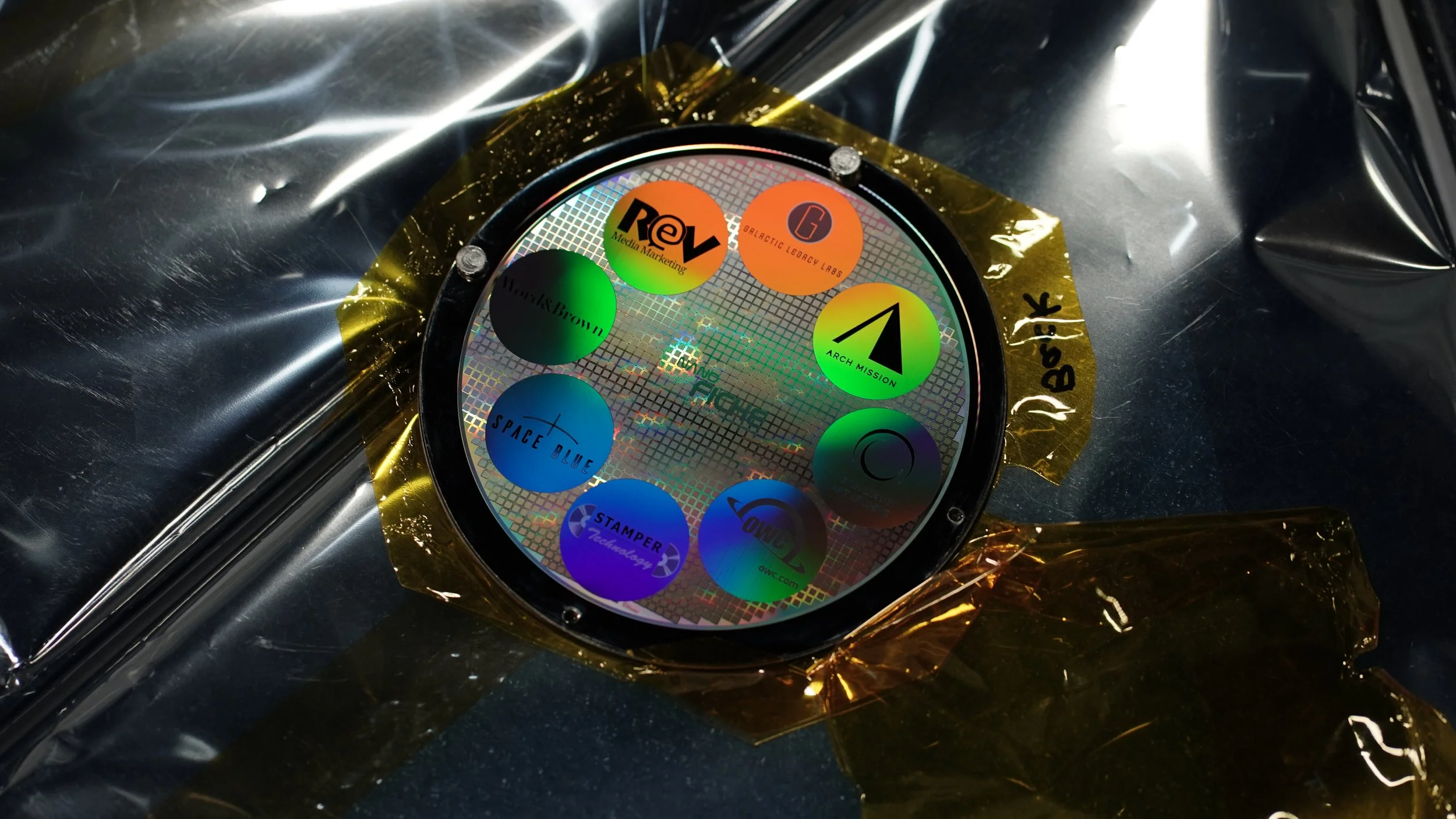Our Missions
The FOUNDATION Library (SpaceX, 2018)
Our first mission was launched by SpaceX on the Falcon Heavy Test Launch in 2018. It is now orbiting the Sun for 30 million years. The first Arch Library contains the Isaac Asimov Foundation Trilogy.
The Lunar Library I (SpaceIL, 2019)
The first major installation of the Lunar Library is a 30 million page archive that flew on the SpaceIL Beresheet Moon lander, in 2019: It is now believed to be intact on the Moon.
The Galactic Legacy Archive (IM, 2024)
The Galactic Legacy Archive, Lunaprise payload, is an ultra-durable archive, created by Galactic Legacy Labs (GLL) and includes a subset of the Arch Mission’s Lunar Library missions.
The Lunar Library II (Astrobotic, 2024)
The Arch Mission Foundation attempted to deliver another installment in the Lunar Library,™ containing additional content, in a mission with Astrobotic in the USA.
The LAVA Library (HI-SEAS, 2021)
In February 2021, the Arch Mission Foundation delivered an Arch Library deep inside a lava tube with the help of the Valoria 1 HI-SEAS crew. This is a test mission for future ultra-long-term Earth Archives.
the conrad Challenge (Blue Origin, 2019)
The Arch Mission Foundation is working with the Conrad Foundation to send and return an Arch™ Library comprised of original content created by students, to be flown to space by Blue Origin in the USA.
The LEO Library (SpaceChain, 2018)
In October 2018, SpaceChain launched a cubesat containing a live blockchain node into low-Earth orbit. Onboard is a copy of the English Wikipedia in a solid-state Arch Library.
the Global Knowledge Vault (2024)
The First Major installation of the Earth Library, located inside the Hagerbach deep underground research facility in Switzerland.
The Mars LibrarY (2027)
The Arch Mission plans to send Arch Libraries to Mars orbit and to the surface of Mars in the coming decades. These archives will backup both the Earth and future Mars colonies.
ASTRBOTIC GRIFFIN 1 (2025)
The Arch Mission is sending a dataset to the South Pole of the Moon along with other curated datasets on NanoFiche at the end of 2025.










